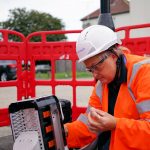TalkTalk and Virgin Media Moot UK Broadband Infrastructure Sharing
The rumour mill has burst into full swing this morning with reports that UK ISPs Virgin Media and TalkTalk are tentatively exploring the possibility of passive infrastructure sharing, which could enable the budget provider to lay their fibre optic lines in Virgin’s cable ducts and vice versa.
At present most of TalkTalk’s broadband ISP services piggyback off Openreach’s (BT) national copper and fibre optic network, although they have invested in their own 1Gbps capable Fibre-to-the-Home (FTTH/P) network to cover the city of York (here). On top of that they recently announced a joint £1.5bn deal with InfraCapital (M&G Prudential) to provide ultrafast broadband via FTTP to more than 3 million premises in mid-sized UK towns and cities (here).
Meanwhile Virgin Media’s Project Lighting has been busy investing up to £3bn on a national expansion of their own 350Mbps capable ultrafast broadband network, which aims to reach an additional 4 million premises by the end of 2019 or 2020 using a mix of hybrid fibre coax (HFC) and pure fibre optic (FTTP) lines via DOCSIS / RFOG technology (around 60% UK coverage).
Advertisement
Suffice to say that any sharing of passive infrastructure would deliver a huge benefit to TalkTalk’s plans by cutting their civil engineering costs (as well as speeding up their timescale) and that seems to be precisely what is being reported in the Telegraph. The talks are currently said to be at an “early stage” and neither side is willing to comment.
Virgin Media and parent company Liberty Global have generally always preferred to retain a closed network (except for corporate connectivity solutions) and thus working with a rival ISP like TalkTalk in such a way would represent a major shift. The newspaper report also suggests that Virgin could benefit by following TalkTalk’s build into new territory, but we’re sceptical.
The cable operator already has good coverage in urban areas and TalkTalk’s rollout will no doubt target some of those same locations. Certainly by working together and perhaps sharing rollout plans then a good degree of overbuild could be avoided, although on the surface this would still appear to benefit TalkTalk more than Virgin. At least in the short term, until Virgin goes DOCSIS 3.1 and we see 1Gbps packages that can compete.
On the other hand Virgin Media do appear to still be lagging behind with their Project Lightning deployment and anything that can help them achieve their rollout plan on-time, as well as within budget, might well be something that they’d consider exploring. In the meantime we’d take this all with a big pinch of salt.
Advertisement
Lest we also forget that Virgin Media and TalkTalk once proposed a joint bid for funding from the government’s Broadband Delivery UK scheme in 2011, which might have resulted in the construction of a rural open access FTTH broadband network for 5 million homes (here). The proposal never amounted to anything but it shows that the two have form in working together.
Mark is a professional technology writer, IT consultant and computer engineer from Dorset (England), he also founded ISPreview in 1999 and enjoys analysing the latest telecoms and broadband developments. Find me on X (Twitter), Mastodon, Facebook, BlueSky, Threads.net and Linkedin.
« Over 50 Cross Party UK MPs Call for Better Rural 4G Mobile Coverage


















































Comments are closed